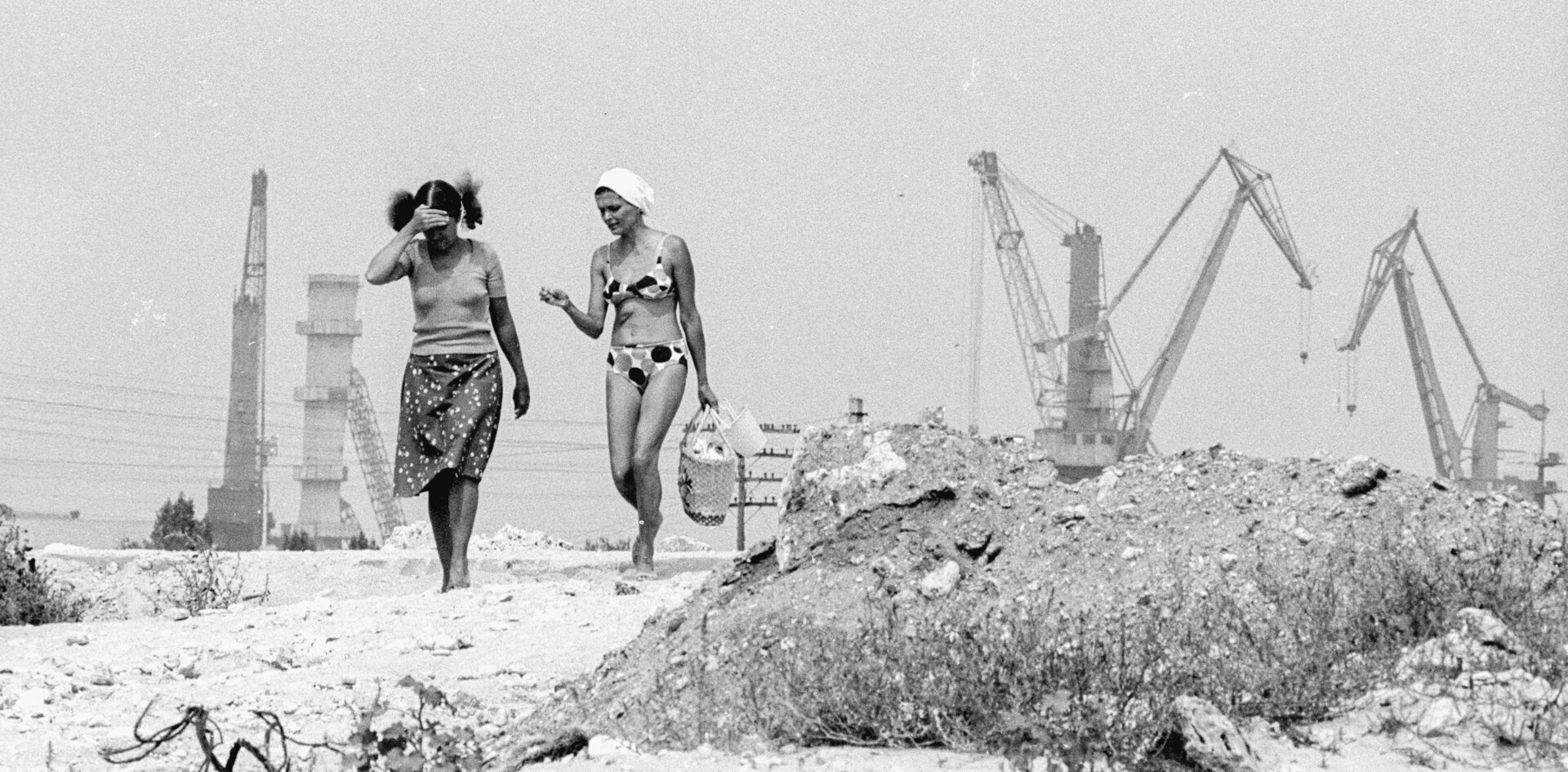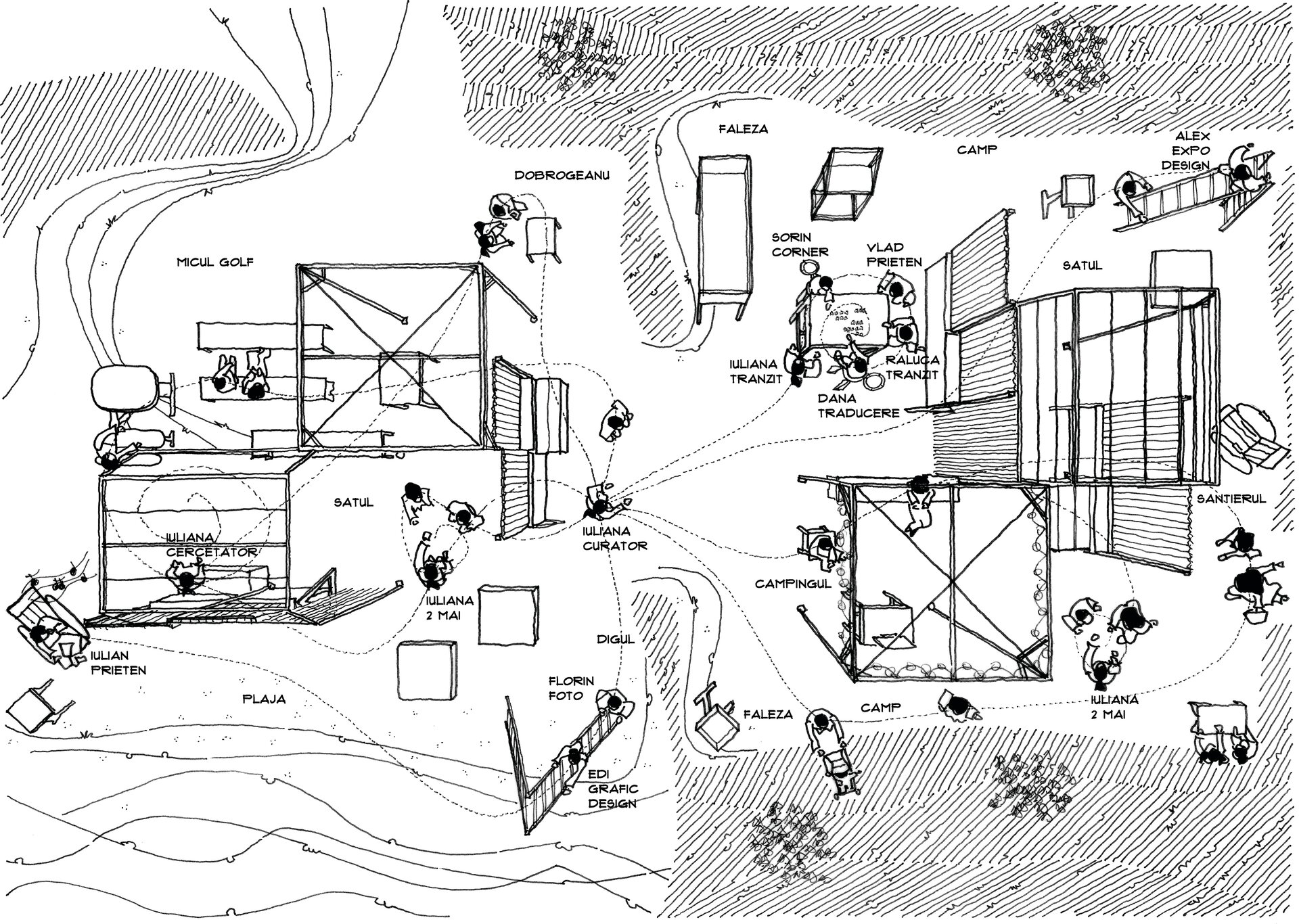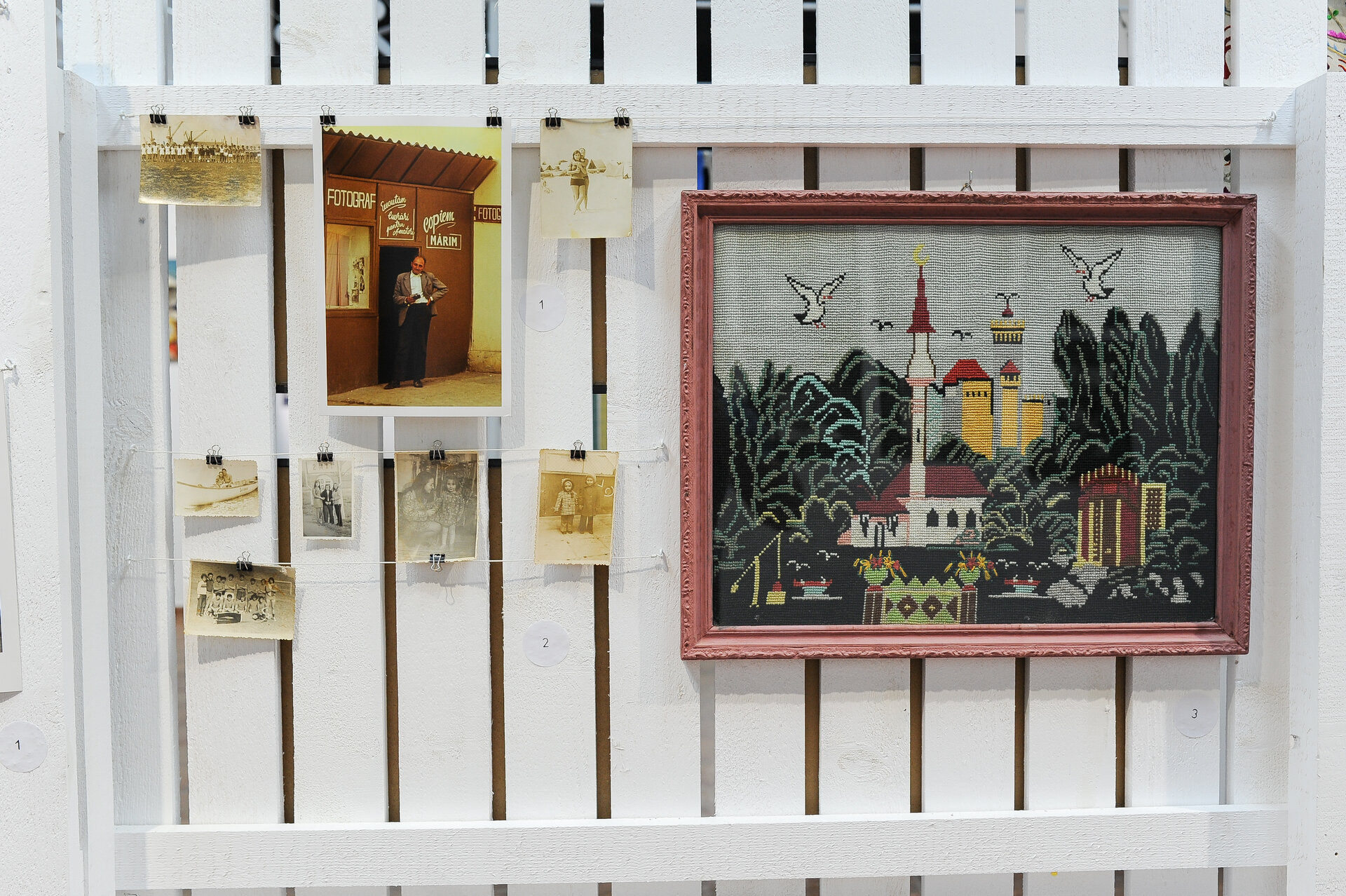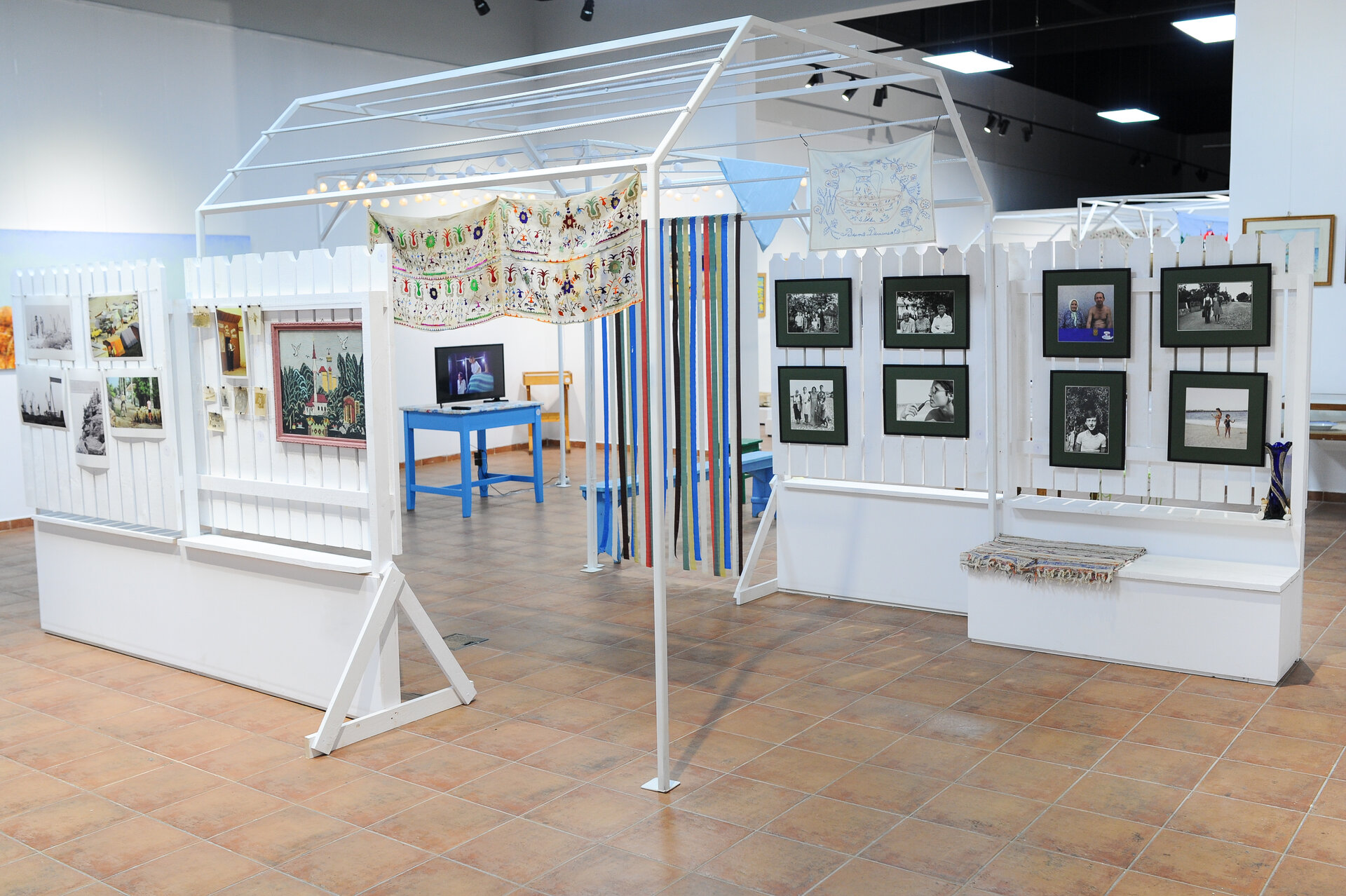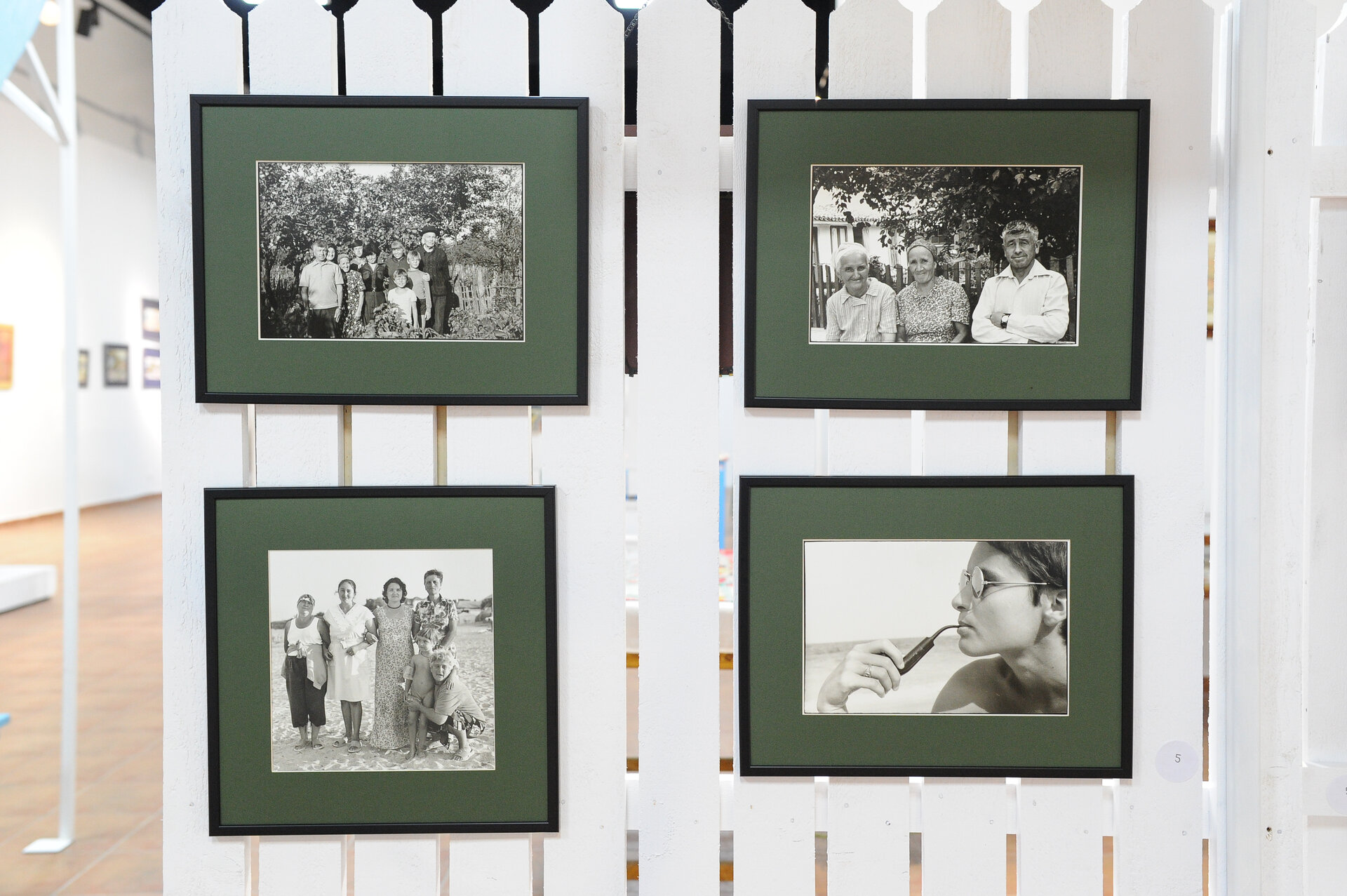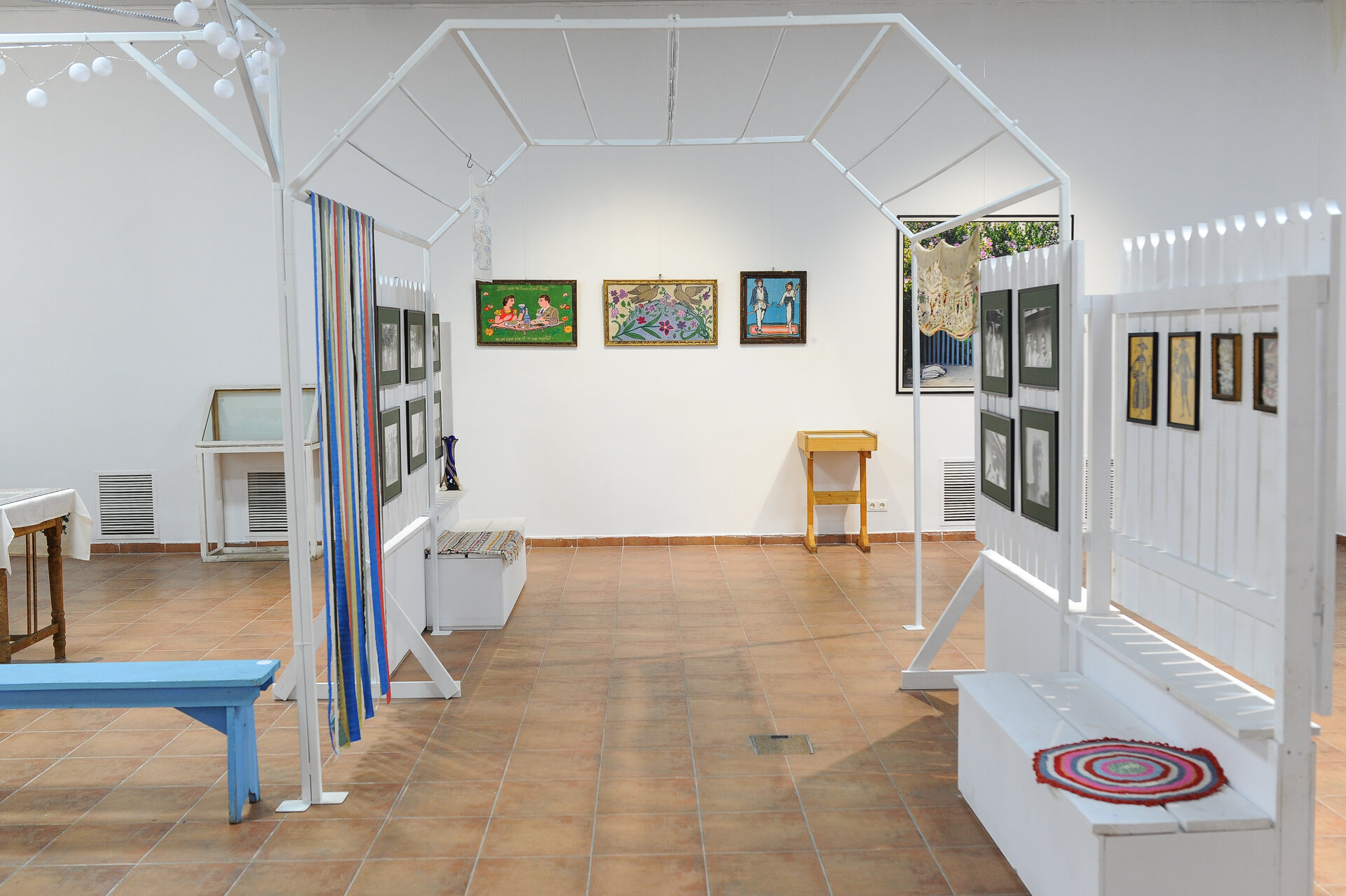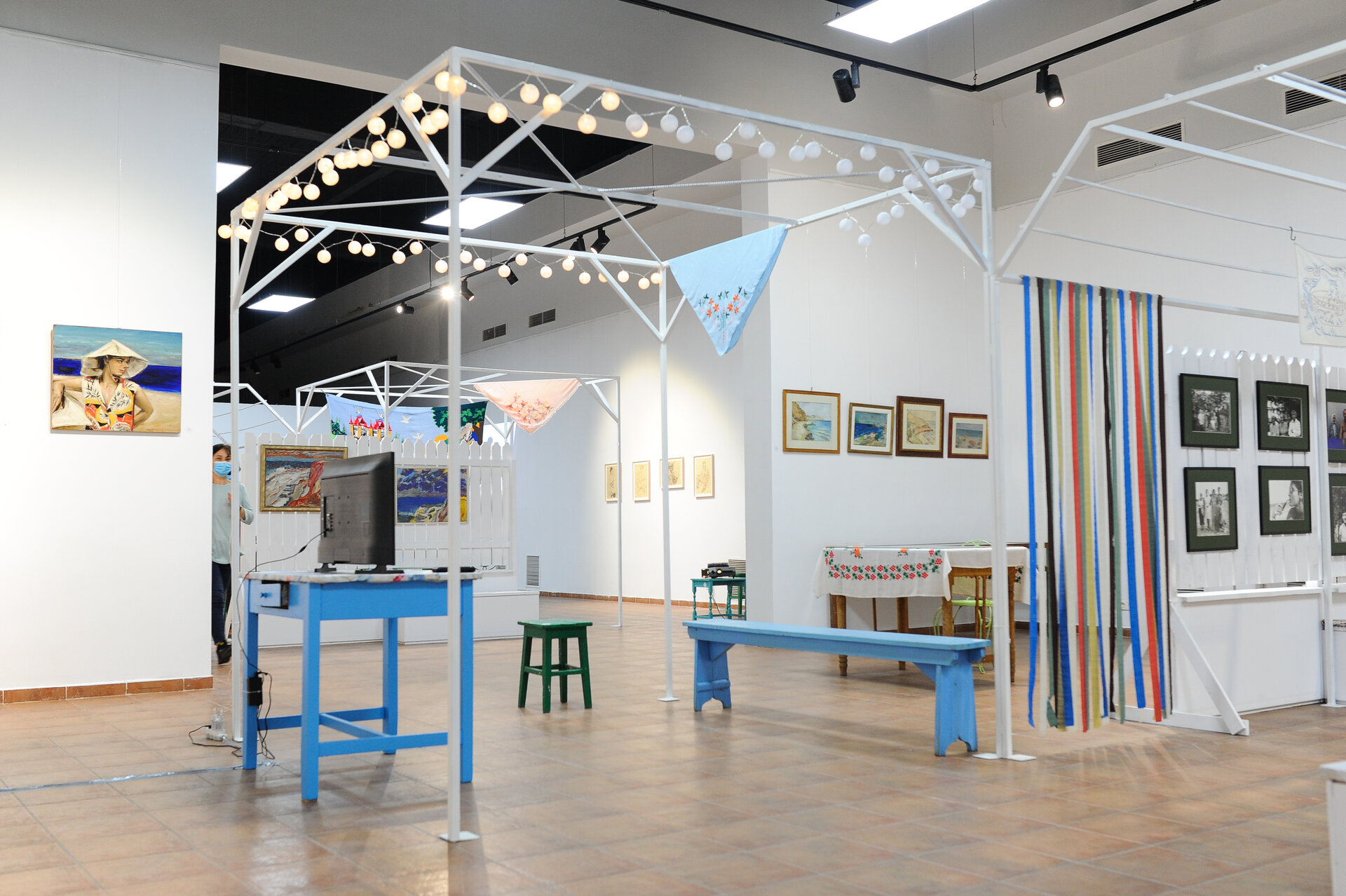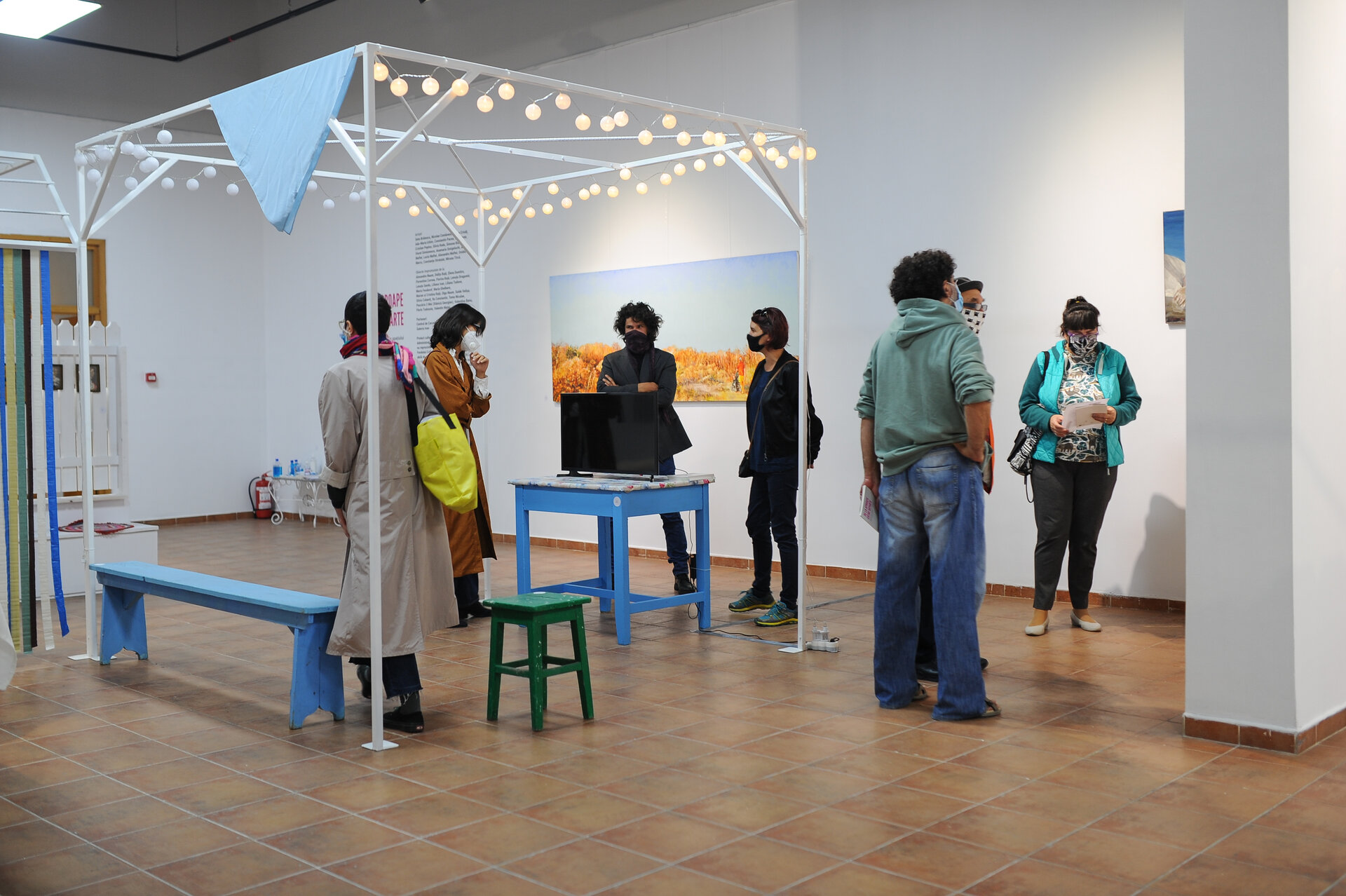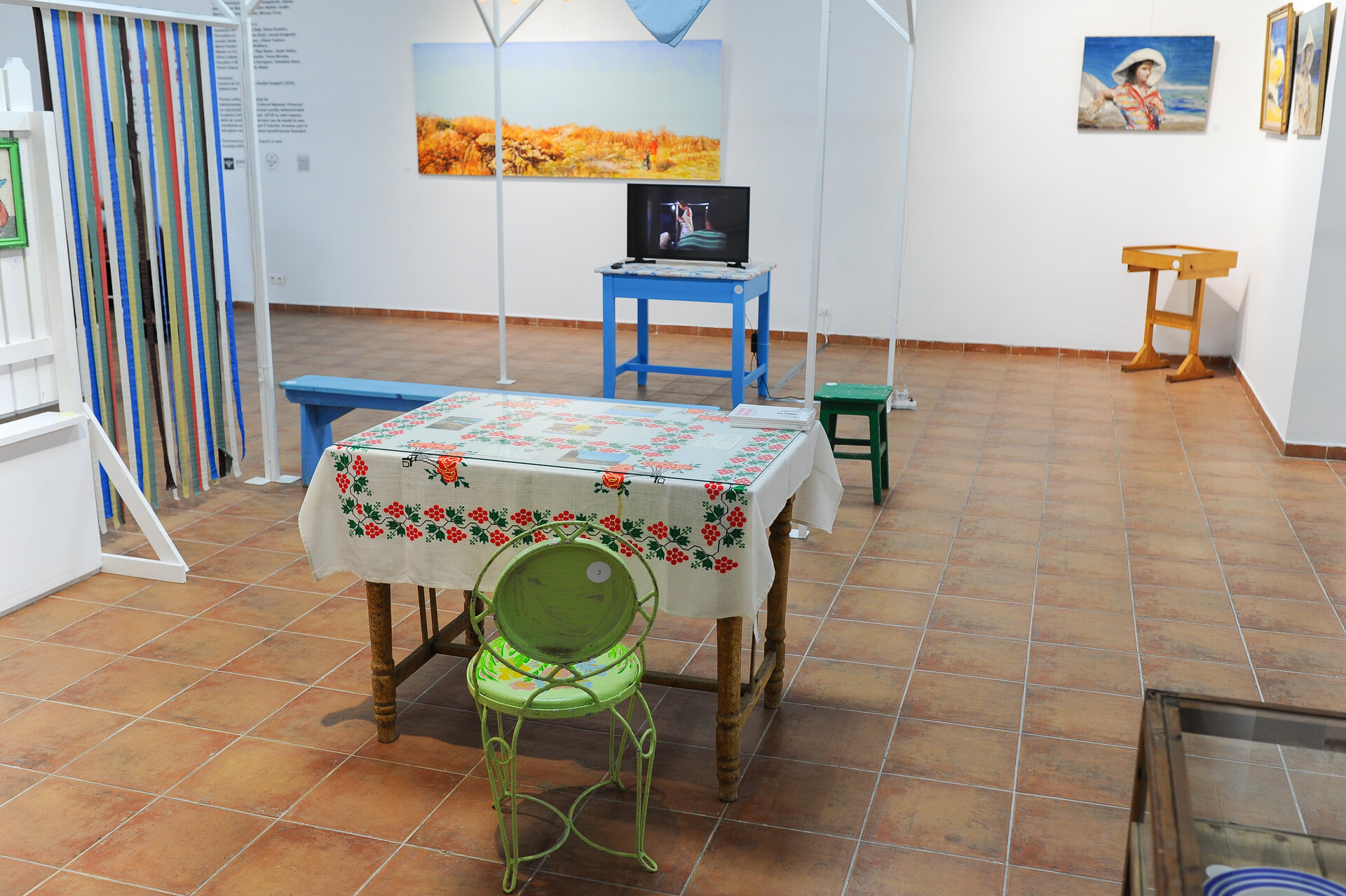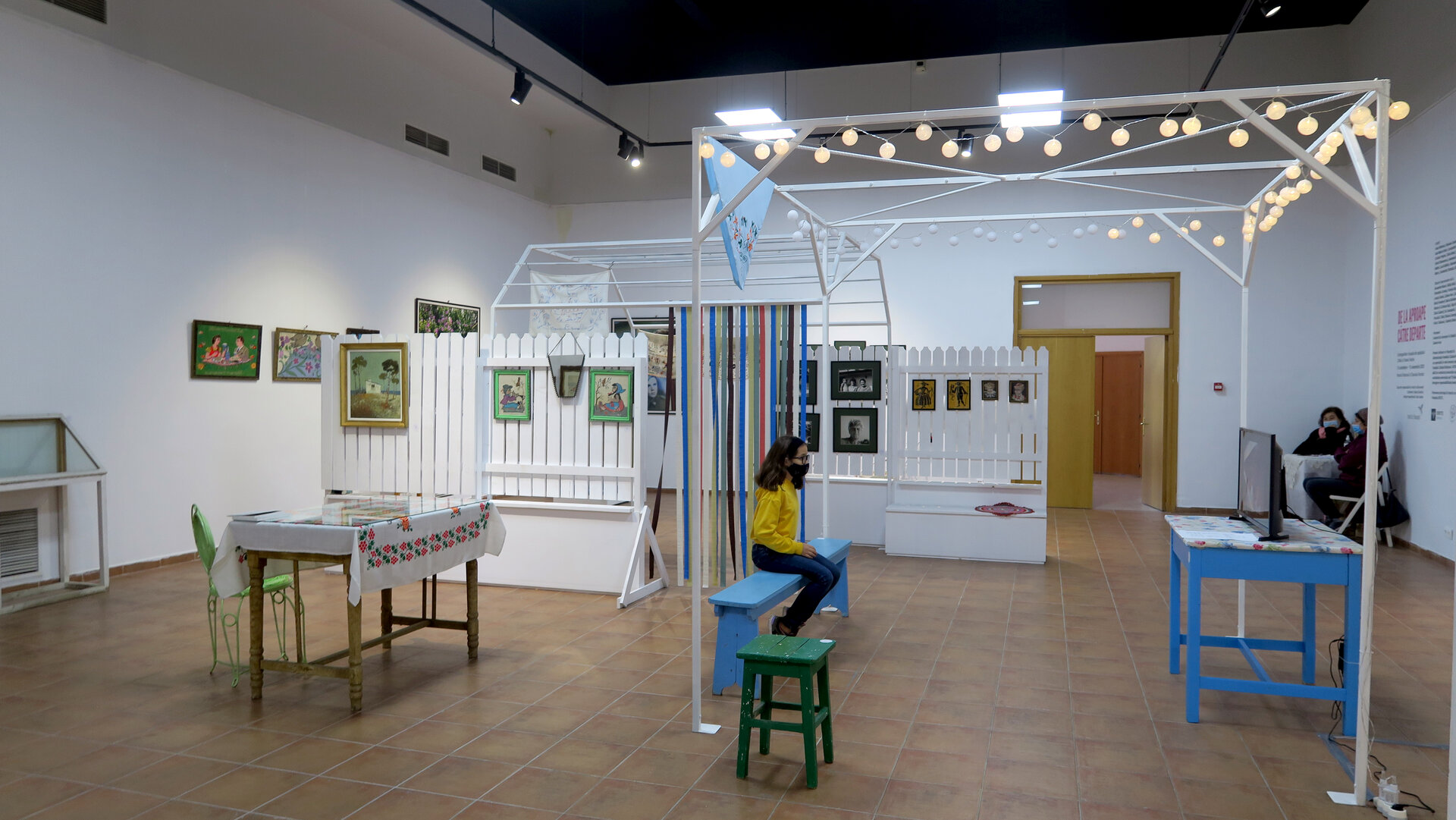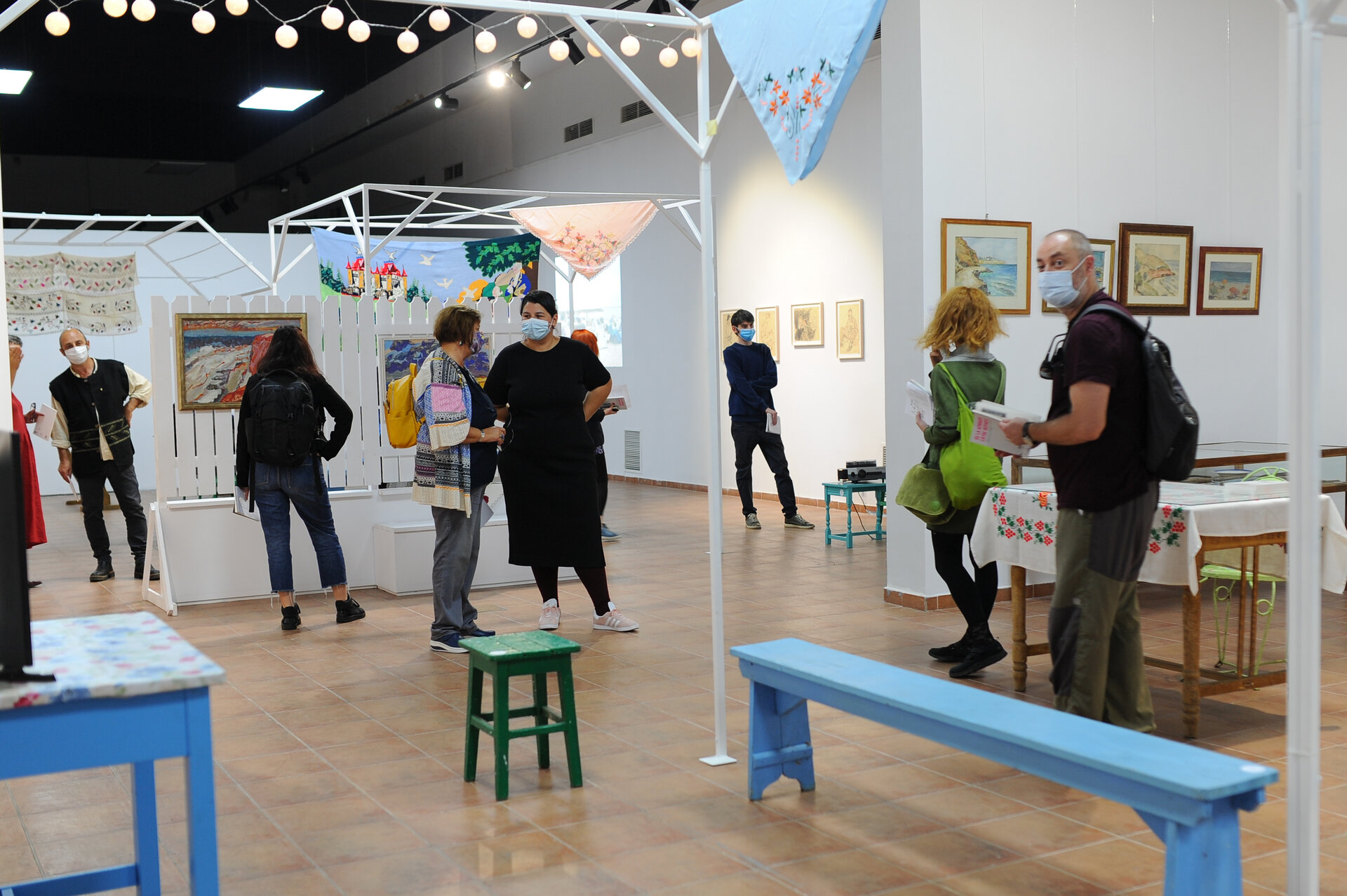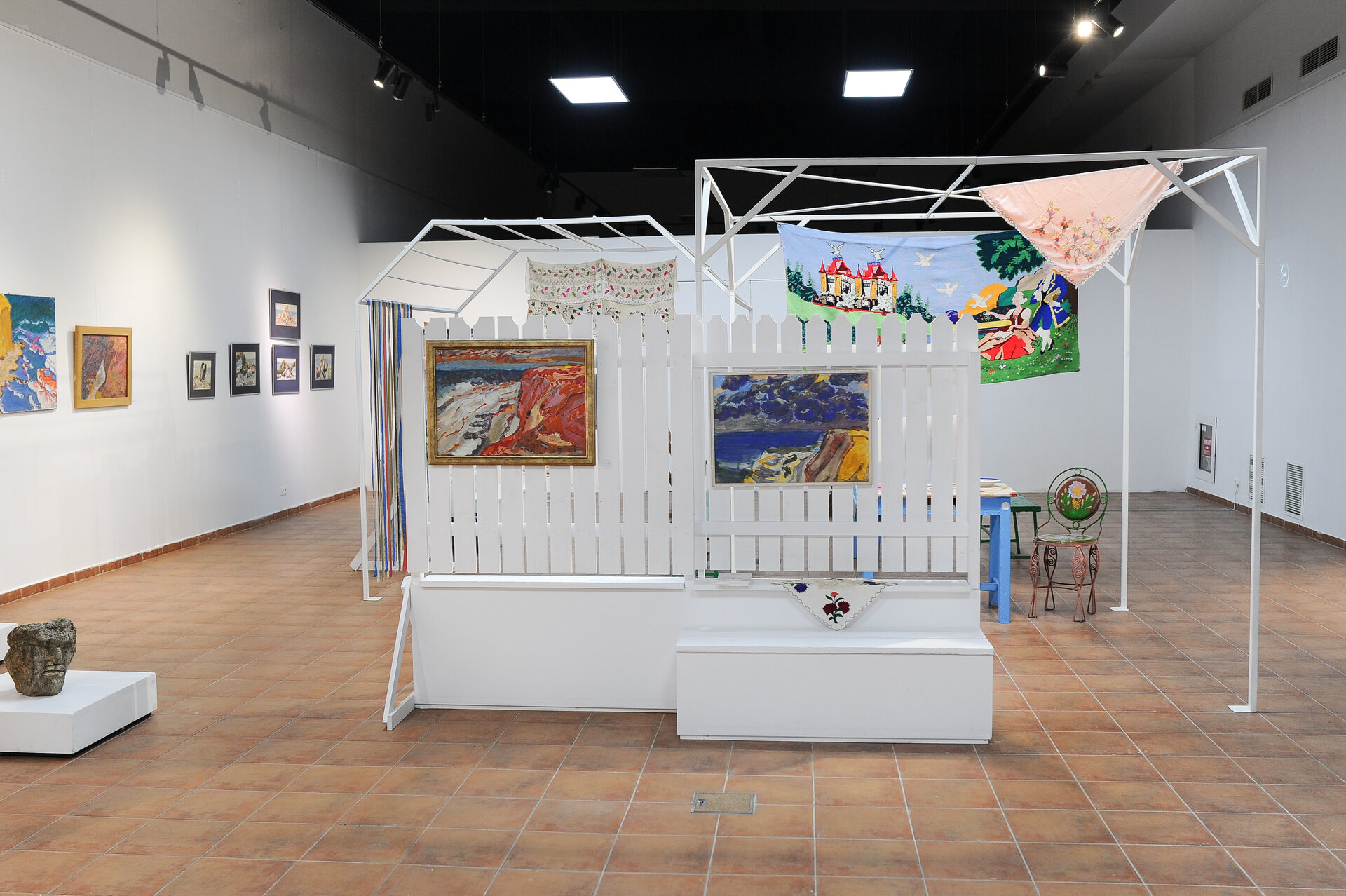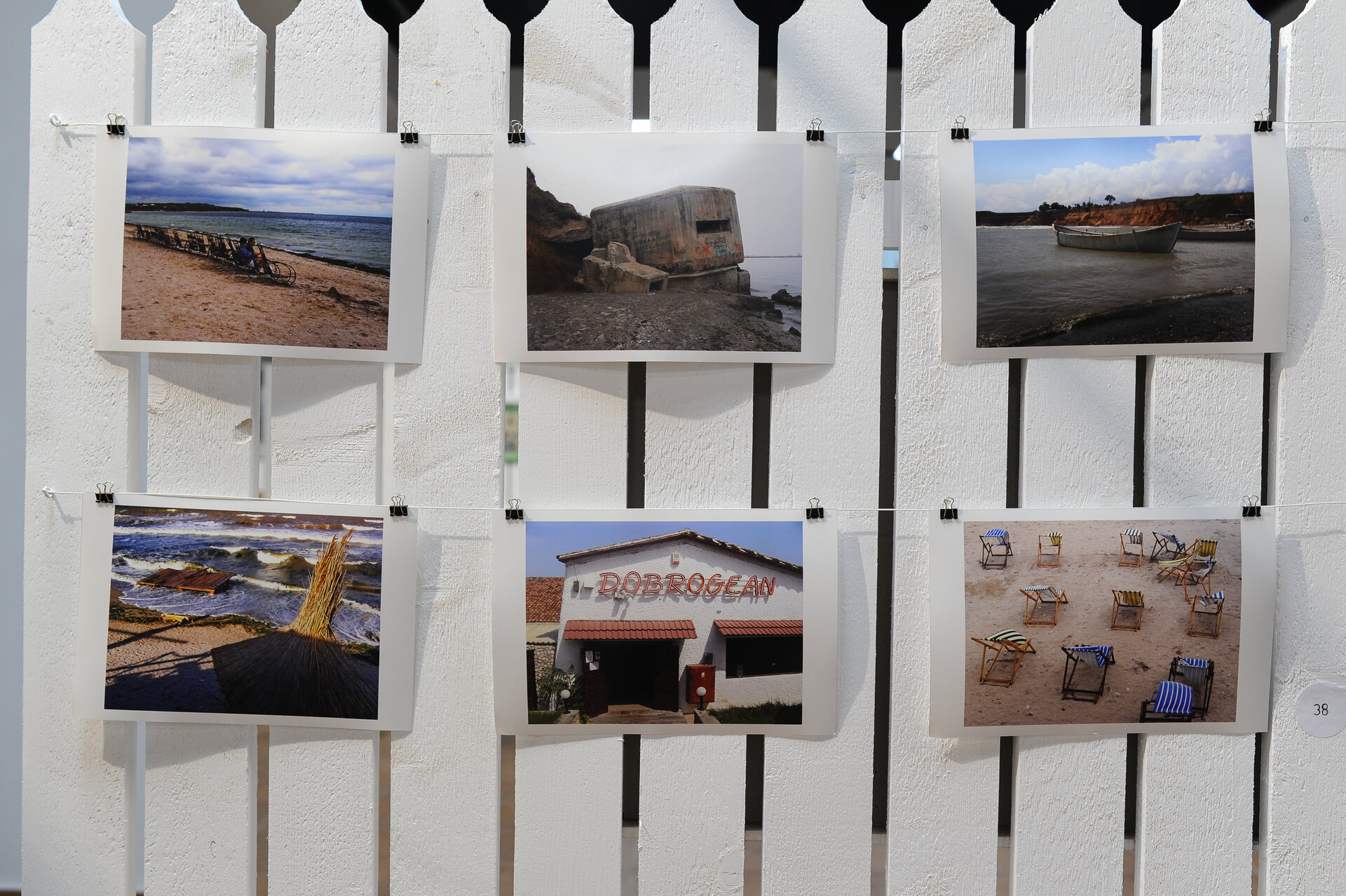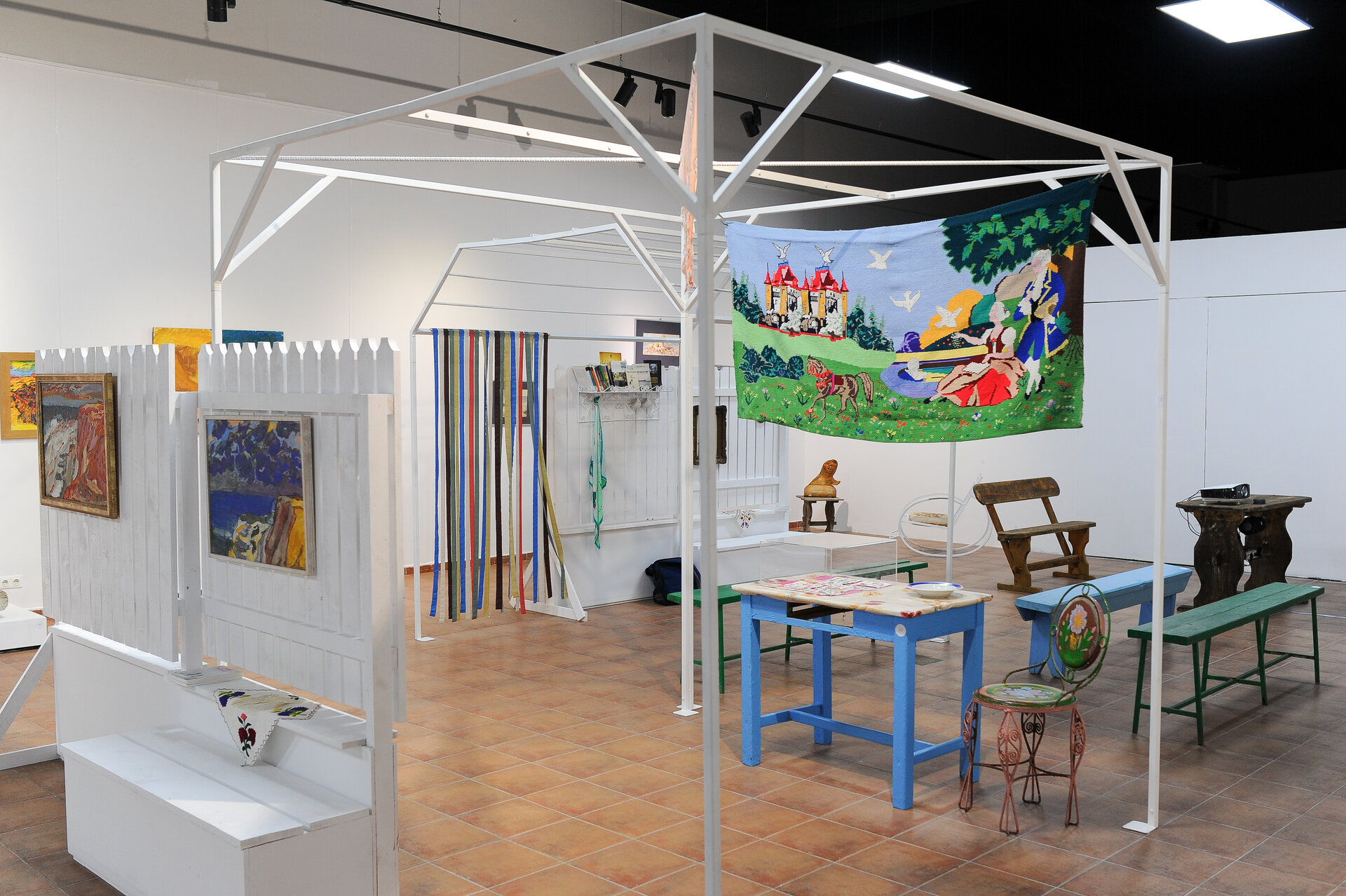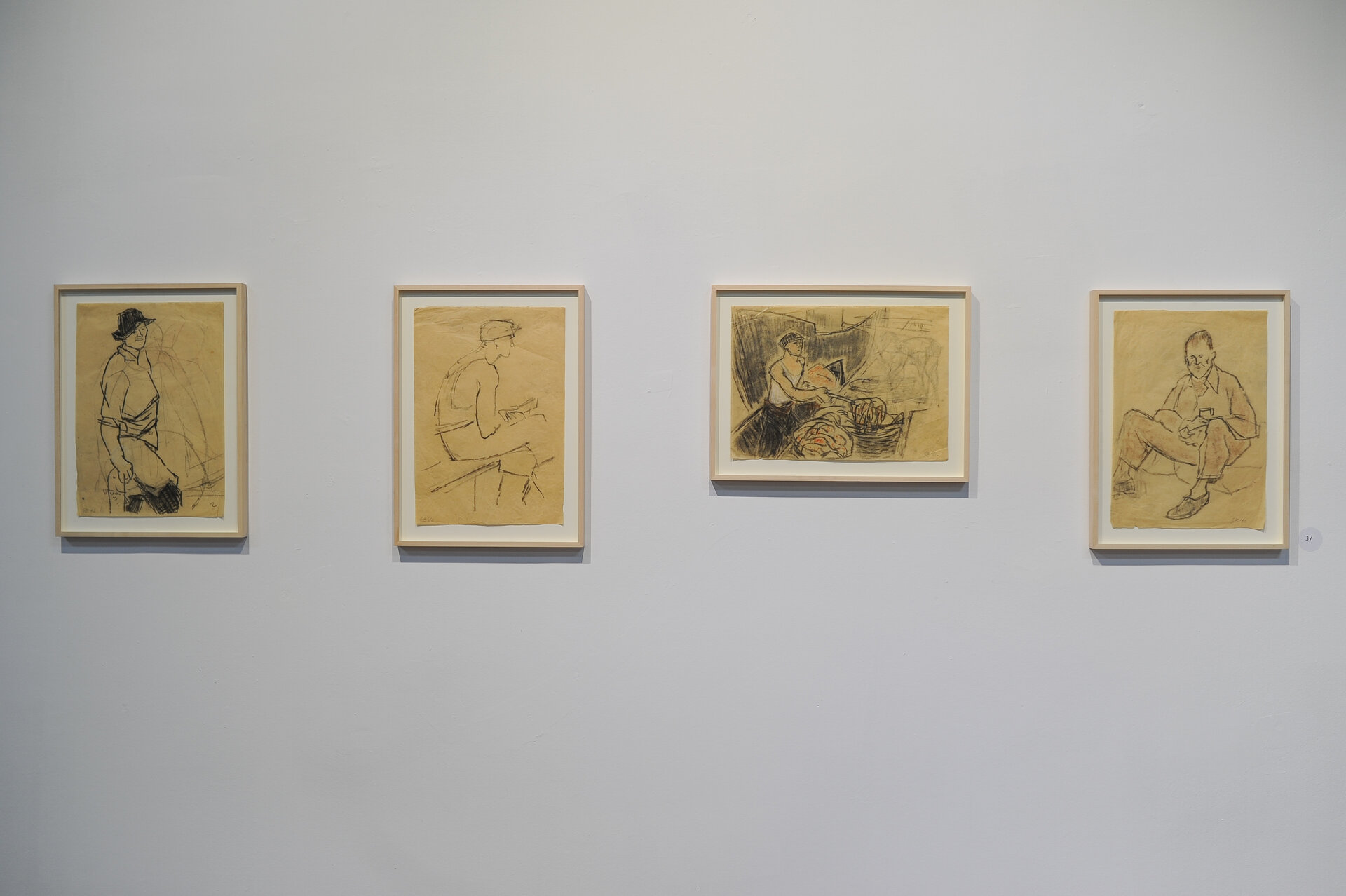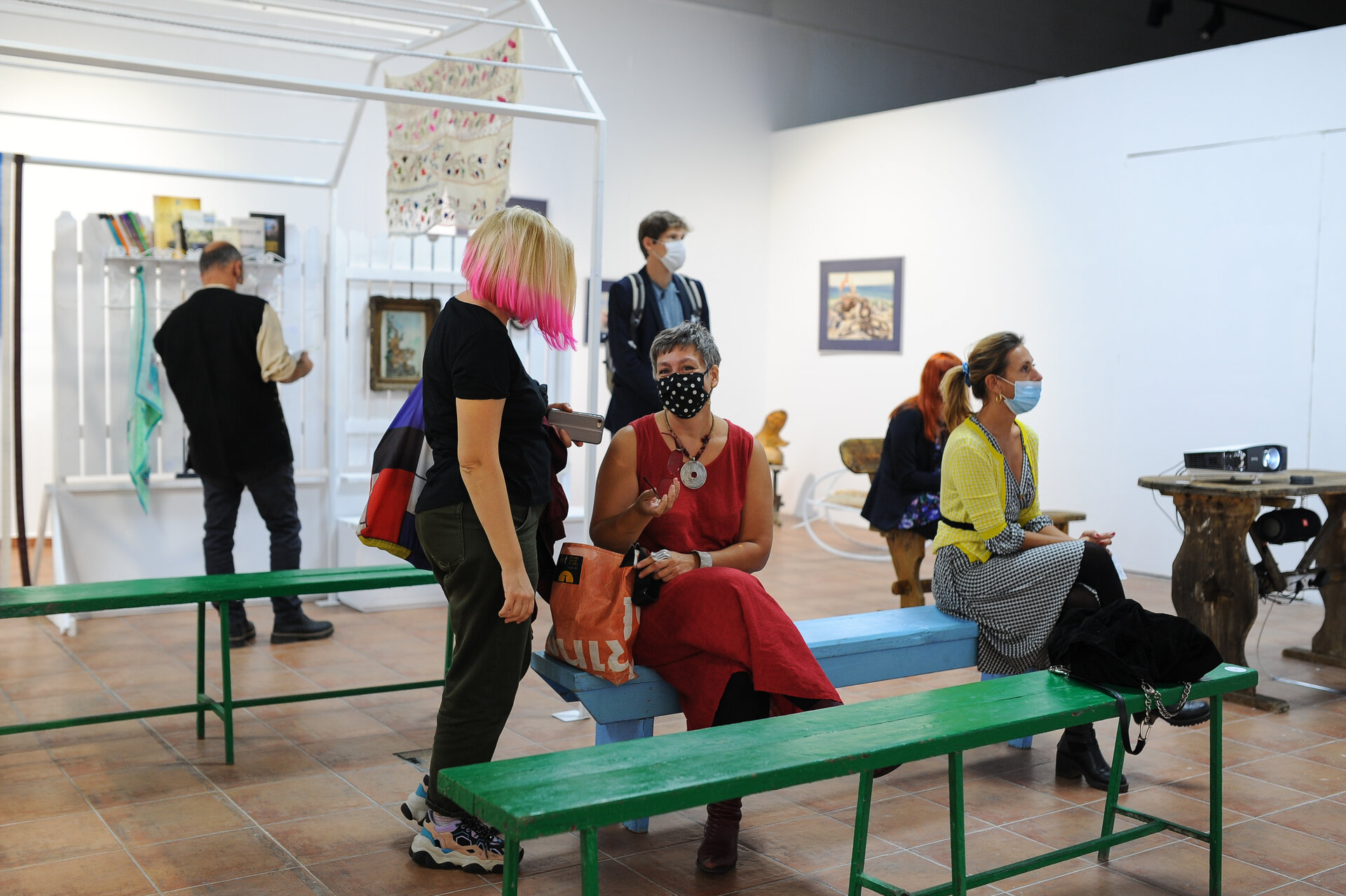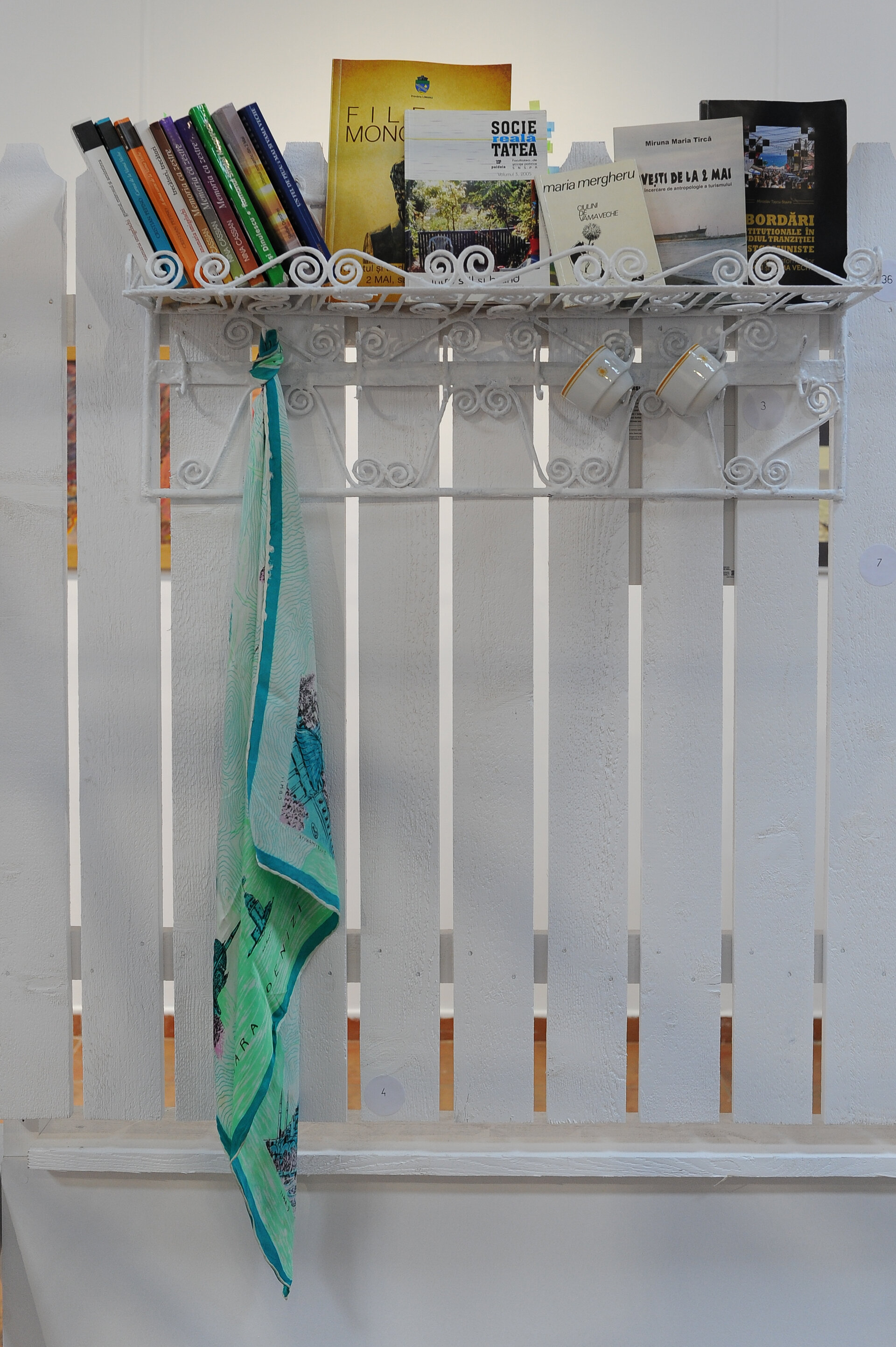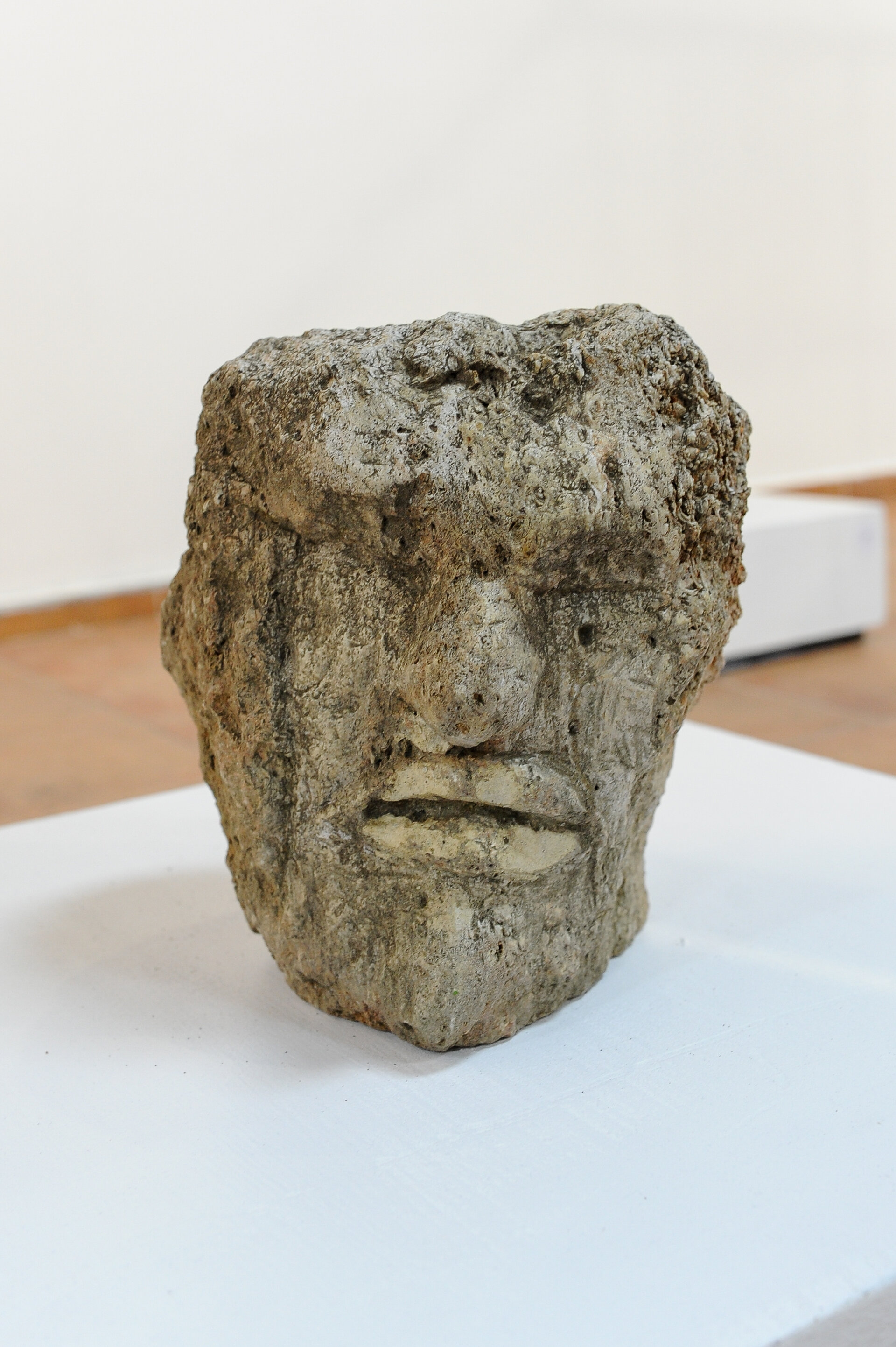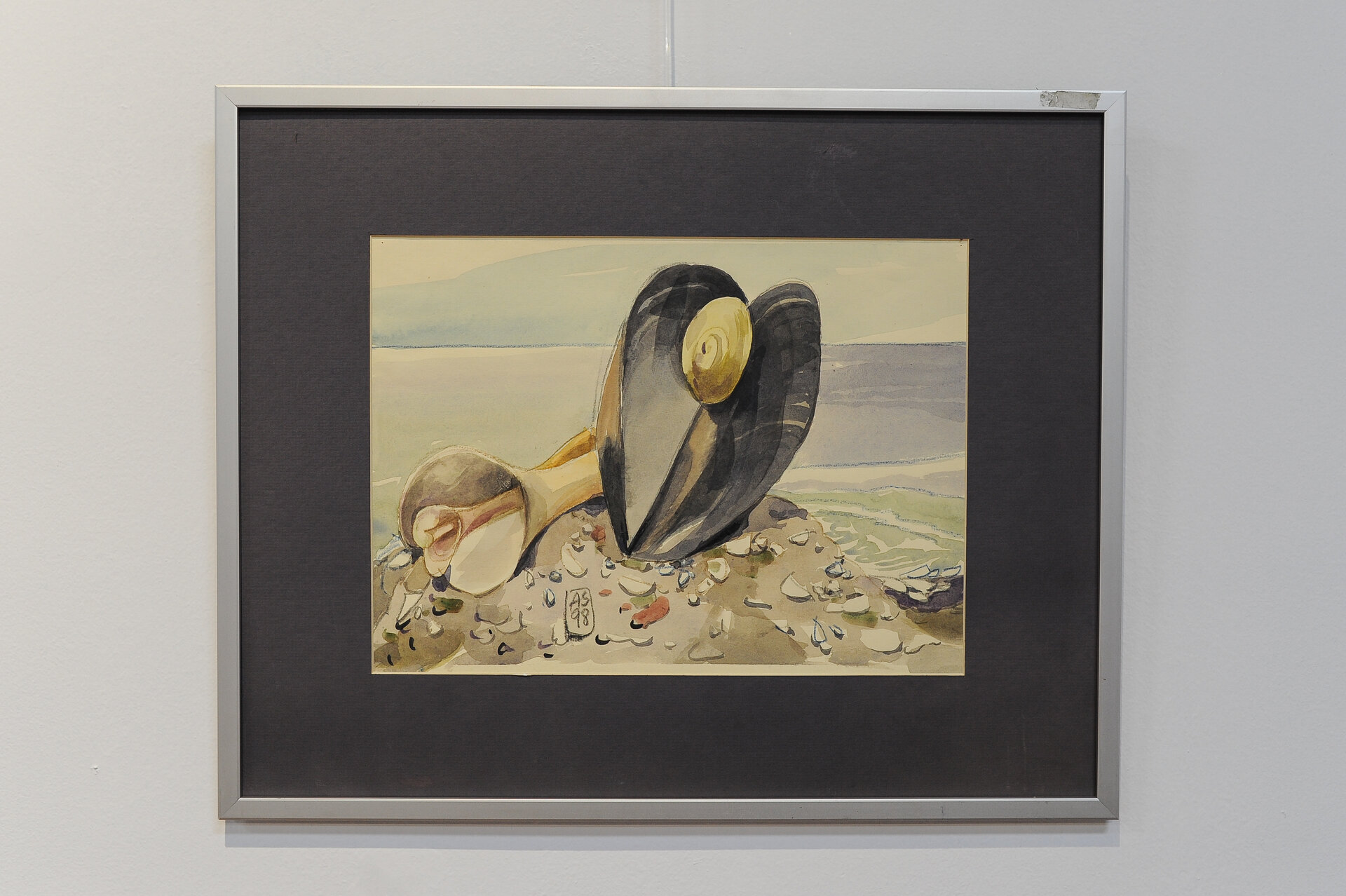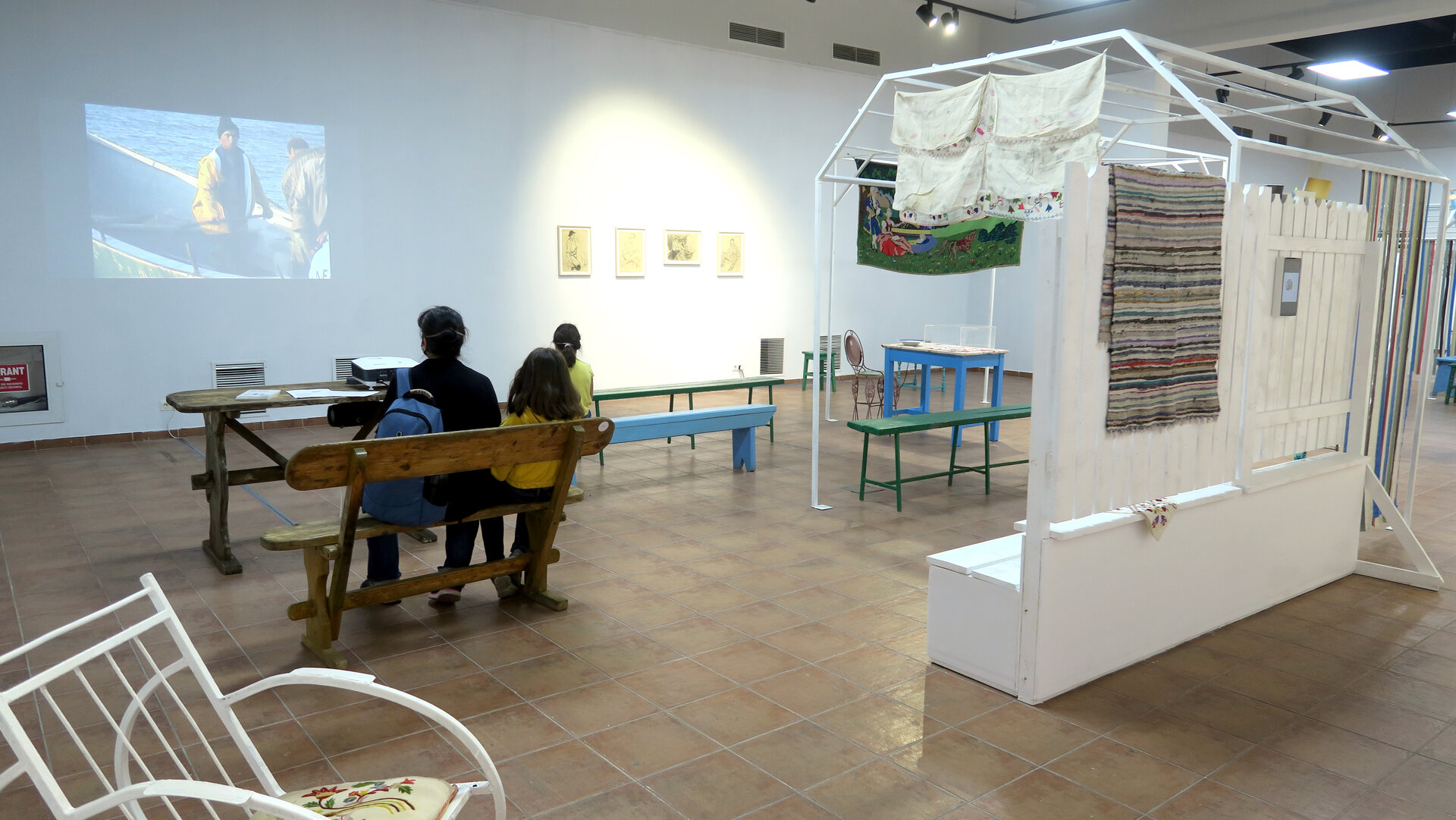
From near to far. Visual mappings of the 2 Mai and Vama Veche space
Authors’ Comment
The National Museum of the Romanian Peasant, Tancred Bănățeanu Room, 15.10. – 15.11. 2020
The exhibition spatializes the results of exhibition curator’s PhD research, which investigates the types of gaze and visual representations of 2 Mai and Vama Veche villages, reflected through artistic works from different periods. The exhibition continues the research and becomes a method of investigation and representation of the relationships between tourists, locals and the geography of places. The selected works are exhibited in a social context, made up of a series of objects and works borrowed from the villagers. Joining the works of artists with elements of material culture produced by locals, aims to outline the everyday universe in which they were made.
Exhibition curator, born and raised on May 2, sociologist: “The ritual – whose absence makes the year feel incomplete – of spending one's holidays in 2 Mai and Vama Veche, made me curious ever since I was a perma¬nent resident of that area. The variety of motivations of the 2 Mai and Vama Veche "addicts" led me to the conclusion that they carry this place with them, they feel that they belong, that they are part of the story, that they can participate and share with people like them same references, legends and mythological geography. The exhibition is founded in the identification of common realms (the “textile-wearers”, the nudist beach, the Dobrogean Restaurant, the Cluj-dwellers’ camp and the Fishery in Vama Veche, the fishmonger's in 2 Mai, etc.), which seeks to represent the space and act as connection points for regulars. The works illustrate the imaginary in the two wide-known localities, because, during Communism, they were destinations for the intellectual elite, places opposing mass tourism and fixed hours, allowing incomers to have a certain freedom, beneficial for artistic creation. The uniqueness of the exhibition is created by the dialogue between artists, the represented space, the host and its private universe. Discussions with project’s team have led to the idea of providing a social context to the visual art, to the dialogue between the artists’ works and those of the villagers, to the hybrid exhibition, to the mix of villagers’ daily lives and the bohemian lifestyles of tourists choosing these spaces for their self-organized holidays. Exhibiting objects from rooms, kitchens or courtyards, provides a context and understanding for the mapped space, and also for the people who live there all the time, not only seasonally. Visitors of the exhibition thus have the possibility of being part of a timeline ending in the present time.”
Exhibition designer, participant in the self-organized holidays in 2 Mai, architect: “Vine or shadowing shelters, two-faced fences, chatting benches, alongside grown or welded spindles, with greenish-blue buildings and many objects of many uses. A world of continually transforming materials, practices and people. From these fragments, the layout grew as a realm of memory and as a node of relationships in space and time. The wooden panels and the metal frames dare be more than abstract support structures for the exhibited works, turning into a contextual and subjective reference. Their very placement in the museum originated in a geographical reference, where as you enter, the sea is to the left, and the village is to the right. The layout exhibits, in turn, contains material practices which speak of the village and of camping, and also of the construction site and of work and of the inter-season space.”
- Exhibition Design in 2 parts: Romanian Design Week 2020 / Central Exhibition & Diploma 2020
- Three Sisters. An (Un)usually Free Script Based on Chekhov
- Diploma 2019. Exhibition of architecture, art and design university graduates
- Pavilion Untold - Hamza X BT
- Leviathan. In the guts of the collection. Transformation of the second floor of the National Museum of Contemporary Art
- Year One. First Year. Model / Vocabulary / Tools
- Beyond the legend. Neagoe Basarab
- “Herbarium” after “The Book of Plants and Animals” by Simona Popescu
- “Meerkats House” by David Drabek
- The Bucharest of Mircea Eliade
- The Modern Idol. Henry Moore in the Eastern Bloc
- “Journey by Moonlight” after Antal Szerb
- MLMSN_IZO
- Batthyaneum. Astro-stories and mechanical animations
- Coronation Festivitie
- L'Année dernière à Malmaison
- From near to far. Visual mappings of the 2 Mai and Vama Veche space
- Smoke Screens
- Space within space
- Bildfahrzeuge (Image Vehicles). A Peter Jacobi Retrospective / National Museum of Contemporary Art
- Volume of a sleep
- Márta Jakobovits / The Road Travelled / National Museum of Contemporary Art
- This Museum is for you!
